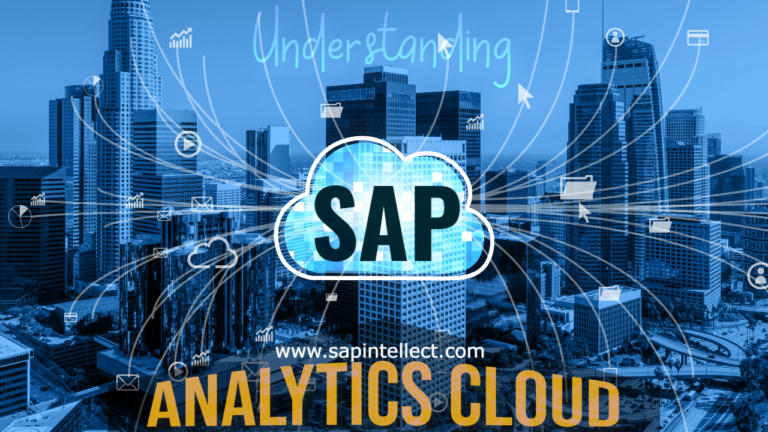SAP ERP (Enterprise Resource Planning): Revolutionizing Business Operations
In today’s fast-paced and highly competitive business landscape, companies of all sizes and industries face the daunting task of managing a myriad of business processes efficiently. From finance and human resources to supply chain and customer relations, the complexity of modern business operations requires robust solutions that seamlessly integrate all aspects of an organization. SAP ERP, short for Enterprise Resource Planning, stands as a flagship example of how technology can revolutionize the way companies manage their resources, streamline operations, and achieve sustainable growth. In this comprehensive exploration of SAP ERP, we will delve into its origins, core functionalities, benefits, challenges, and its ever-evolving role in reshaping the business world.
Origins of SAP ERP
SAP ERP has its roots in Germany, where five former IBM employees – Dietmar Hopp, Hasso Plattner, Claus Wellenreuther, Klaus Tschira, and Claus Heinrich – founded SAP AG in 1972. Their vision was to develop software that could integrate different business functions within an organization, enabling data sharing and providing a unified view of operations. This laid the foundation for what we now know as SAP ERP.
Core Functionalities
Integration Across Functions – At its core, SAP ERP is a suite of integrated applications that cover various business functions, such as finance, human resources, procurement, production, sales, and more. This integration is pivotal, as it allows data to flow seamlessly between different departments, reducing redundancies and improving data accuracy.
Real-time Data – One of the standout features of SAP ERP is its ability to provide real-time data. This means that decision-makers can access up-to-the-minute information on various aspects of their business, facilitating quicker and more informed decision-making.
Modular Structure – SAP ERP is modular in design, meaning organizations can choose which modules they need based on their specific requirements. Whether it’s SAP Financial Accounting (FI), SAP Human Capital Management (HCM), SAP Supply Chain Management (SCM), or any other module, businesses can tailor their ERP implementation to suit their needs.
Customization and Flexibility – SAP ERP is highly customizable, allowing businesses to adapt the software to their unique processes and requirements. This flexibility ensures that ERP solutions are not one-size-fits-all and can be fine-tuned to optimize business operations.
Reporting and Analytics – SAP ERP boasts robust reporting and analytics capabilities. It allows organizations to generate detailed reports, track key performance indicators (KPIs), and gain valuable insights into their operations, which can be instrumental in making data-driven decisions.
Benefits of SAP ERP
Improved Efficiency – By automating routine tasks and eliminating manual data entry, SAP ERP improves operational efficiency. This, in turn, frees up employees to focus on more value-added activities.
Enhanced Decision-Making – With real-time data and comprehensive reporting, organizations can make more informed decisions. This is particularly critical in today’s dynamic business environment.
Cost Reduction – SAP ERP can help reduce operational costs by optimizing processes, minimizing errors, and improving resource allocation.
Regulatory Compliance – The software often comes with built-in compliance features to help businesses adhere to various regulatory requirements, such as financial reporting standards or data protection regulations like GDPR.
Scalability – SAP ERP is highly scalable, making it suitable for small businesses and large enterprises alike. As a company grows, its ERP system can grow with it.
Challenges in Implementing SAP ERP
Cost – Implementing SAP ERP can be a substantial financial investment, both in terms of licensing fees and the cost of implementation, which includes training and customization.
Complexity – The complexity of SAP ERP can be overwhelming for some organizations, leading to a steep learning curve for employees.
Customization Pitfalls – While customization is a strength, it can also be a pitfall. Over-customization can lead to compatibility issues and make system upgrades more challenging.
Change Management – Adopting SAP ERP often requires significant changes in business processes. Managing these changes and ensuring employees adapt can be a substantial challenge.
Evolving Role of SAP ERP
SAP ERP has evolved significantly since its inception. It has transitioned from on-premises solutions to cloud-based offerings, making it more accessible to businesses of all sizes. Additionally, SAP has embraced emerging technologies like artificial intelligence (AI), machine learning (ML), and the Internet of Things (IoT) to enhance its ERP suite.
The advent of SAP S/4HANA, a next-generation ERP suite, has also been a game-changer. It leverages in-memory computing to provide even faster access to data and offers a more intuitive user experience. It’s a testament to SAP’s commitment to staying at the forefront of ERP innovation.
In conclusion, SAP ERP has played a pivotal role in transforming the way businesses manage their resources and operations. Its integration capabilities, real-time data access, and flexibility have made it a valuable tool for organizations seeking to stay competitive in a rapidly changing business landscape. While challenges exist, the benefits of SAP ERP, along with its ongoing evolution, continue to make it a cornerstone of modern business management. As technology continues to advance, SAP ERP is likely to remain a driving force behind operational excellence and business success.







